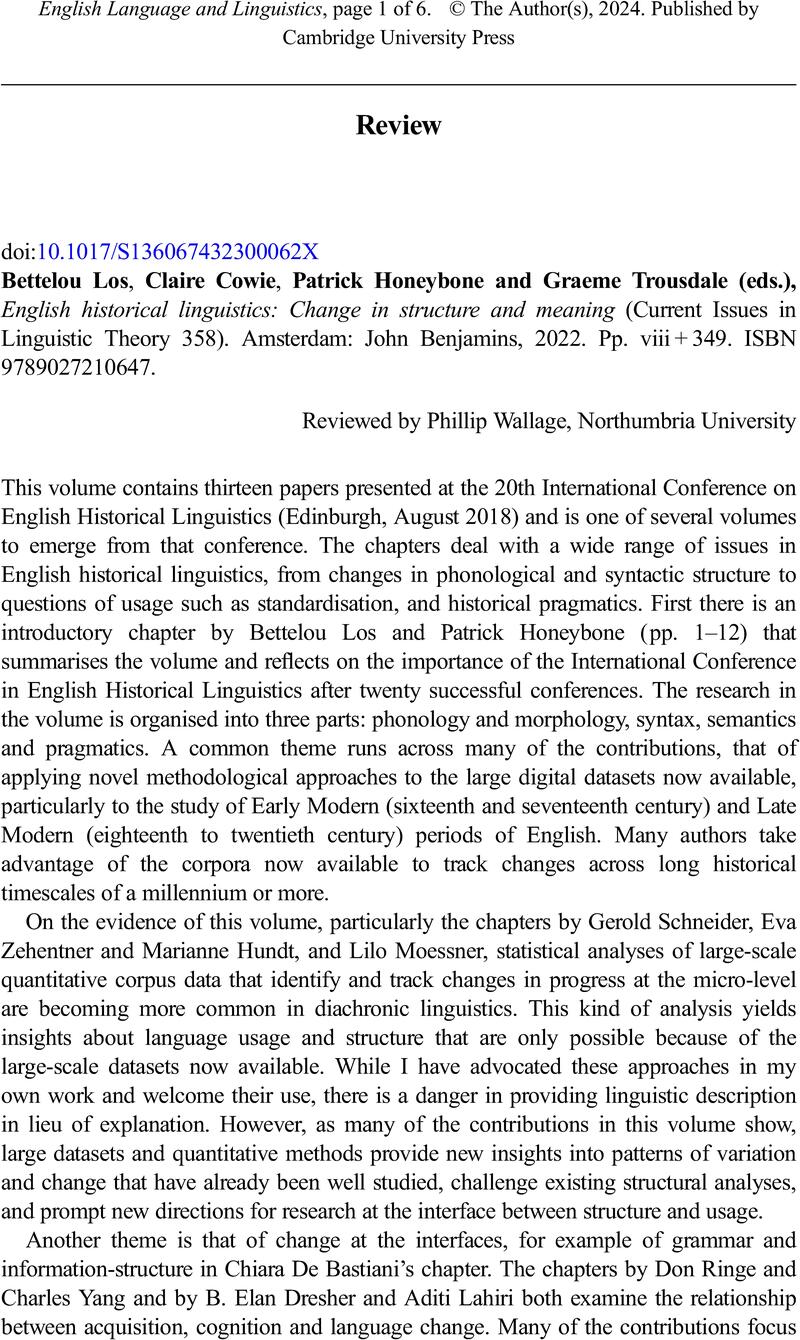No CrossRef data available.
Article contents
Bettelou Los, Claire Cowie, Patrick Honeybone and Graeme Trousdale (eds.), English historical linguistics: Change in structure and meaning (Current Issues in Linguistic Theory 358). Amsterdam: John Benjamins, 2022. Pp. viii + 349. ISBN 9789027210647.
Review products
Bettelou Los, Claire Cowie, Patrick Honeybone and Graeme Trousdale (eds.), English historical linguistics: Change in structure and meaning (Current Issues in Linguistic Theory 358). Amsterdam: John Benjamins, 2022. Pp. viii + 349. ISBN 9789027210647.
Published online by Cambridge University Press: 12 February 2024
Abstract
An abstract is not available for this content so a preview has been provided. Please use the Get access link above for information on how to access this content.

- Type
- Book Review
- Information
- English Language & Linguistics , Volume 28 , Special Issue 3: Fragments: construction and reconstruction , September 2024 , pp. 645 - 650
- Copyright
- Copyright © The Author(s), 2024. Published by Cambridge University Press
References
Hinterhölzl, Roland. 2014. On the interaction between syntax, prosody and information structure: An interface approach to word order developments in Germanic. In Bech, Kristin & Kristine Gunn Eide, (eds.), Information structure and syntactic change in Germanic and Romance languages, 314–76. Amsterdam: John Benjamins.Google Scholar
Struick, Tara & van Kemenade, Ans. 2018. On the givenness of OV word order: A (re)examination of OV/VO variation in Old English. English Language and Linguistics 24, 1–22.CrossRefGoogle Scholar
Yang, Charles. 2016. The price of linguistic productivity: How children learn to break the rules of language. Cambridge, MA: MIT Press.CrossRefGoogle Scholar



